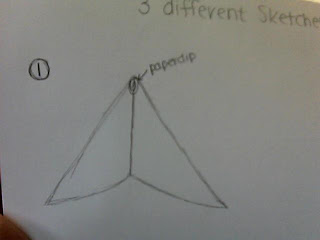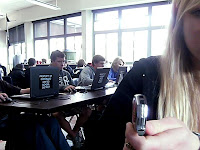# of achievements: 19
Class Achievements:
- We built the 1st mark station
- We never timed 6 cubes, but we did time 4
- The time for 4 cubes was 1:37, and that was fairly close to 1:30
- There were a couple errors that came with that, so the time would have been better if all the cubes ran through smoothly.
- Along with putting my stuff away, I have been working to clean the whole organizer set in the front of the classroom
Team Achievements:
"Flash of Inspiration" - Brainstorm a solution for your section of the assembly line with a sketch.
"If you Build It..." - Implement a solution for your section of the assembly line.

- We had a few errors at first, but then we fixed them with different programming
- ours ran exactly how we wanted and continued running
"Round and Round We Go" - Iterate on your initial implementation. Explain the challenge you discovered off the first effort and what you did to overcome it.
- First problem: the cube would fall off the side of the assembly line
- fixed by: adding walls so the cube would stay on
- Second Challenge: The rubber band for the motor kept falling off the wheel
- Fixed by: taking out one of the wheels and then just changing the speed of the line on the robopro (best solution but it took a long time to discover!!!)
"Videography" - Capture video of the project in action.
"
"Lab Rat" - Collect data related to your implementation. Explain what you collected and how you used it.
- We colleted data on how fast our part of the assembly line worked (4 times)
- We timed from the moment the cube fell onto the belt, and then stopped the time when it left the belt.
- We used this data in a chart in order to graph it, so we could see what the average speed was
"Show Me" - Visualize your data in a useful format. Explain your choice of presentation.
- I decided to use a chart to visualize my data
- I tried making a graph with all the data, but with so many numbers it was very hard to visualize the data in an easy-to-read manner
"Leave no Trace" - Return your fischertechnik to their appropriate storage locations/clean your work space.
- I have been working not only to put my stuff away, but to clean and reorganize the whole fischertecknik kit up at the front of the classroom
- VERY HARD I must say!!
Individual Achievements:
"Share It" - Provide feedback (Sustain, Change, Question, Idea) for another team. Who did you provide feedback to and what was it?
- The feedback was for Andrew and Rafe
- They constructed the start of the assembly line piece
"Keep the Customer in Mind" - Your blog post is formated in a readable, professional manner. Writing is short and concise. Spacing is used to break up thoughts/concepts. Lists and/or bullet points are used as appropriate. No "monolithic" paragraphs.
- I have learned from last year paragraphs are not easy or fast to read so I avoided those!
- Instead I used short bullets to explain my thoughts
"Nice One!" - Identify a student from outside of your team that was most helpful to your efforts. Be specific about how they were helpful.
- Gustavo was the most helpful
- Since Morgan and I are new at programming, he helped us program the light sensor on the assembly line
- This helped us time the marker to mark the cube at the perfect time
"Helping Hand" - List a student that you helped outside of your team. How were you helpful to them?
- I helped Andrew and Rafe
- A message came up and said they needed to do something and I helped them notice their power was off on the programer
- Also since they are group 1 and we are group 2 I helped them figure out how to build their project
- Helped with speed, and a more efficient way of sorting the dice
"Meta Gamer" - Based on our grading system for this challenge, explain the benefit of earning the class achievements, even though everyone scores them when earned (use math to justify your case).
- Benefits:
- if you earn all the class achievements you will be caught up with everyone else and not lack any points
- if you earn the class achievements and you have all the other achievements you will be the stabalizer for the grades
- Math: 10 class achievements + 18 other achievements= all acievements (A+)
- 10 class achievements + 10 other achievements= 20 achievements
- But if you earn all the achievements and don't earn all the others, at least you are getting some points even if you don't get all of them
"And the Winners Are..." - Recognize class participation by selecting one person other than yourself for each of our five activity awards (Initiative, Sportsmanship, Collaboration, Humor, ...what's the fifth one we have up on the board?!)
- Initiative: Gustavo
- Sportsmanship: Morgan
- Collaboration: Andrew Cuban
- Humor: Rafe
- Improvisation: Hunter
 |
| This is jsut the programming we used. Thought it was cool so I posted it!! |












































